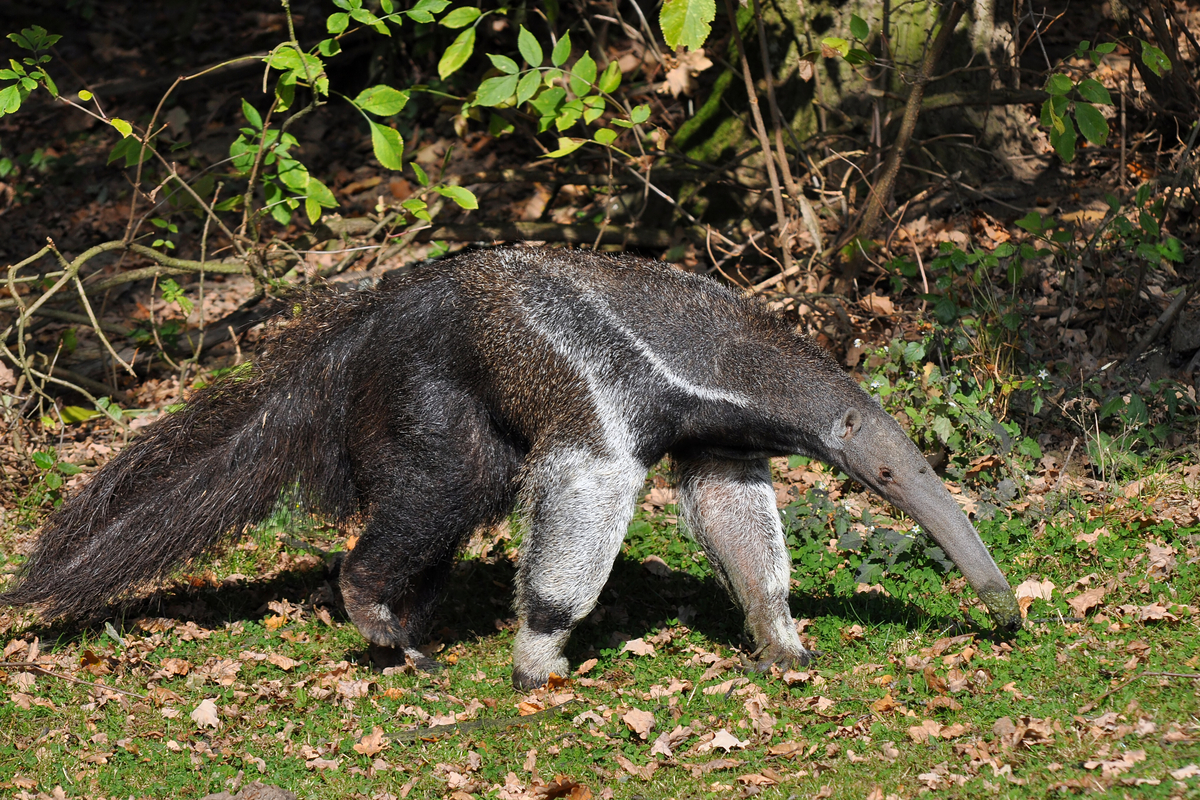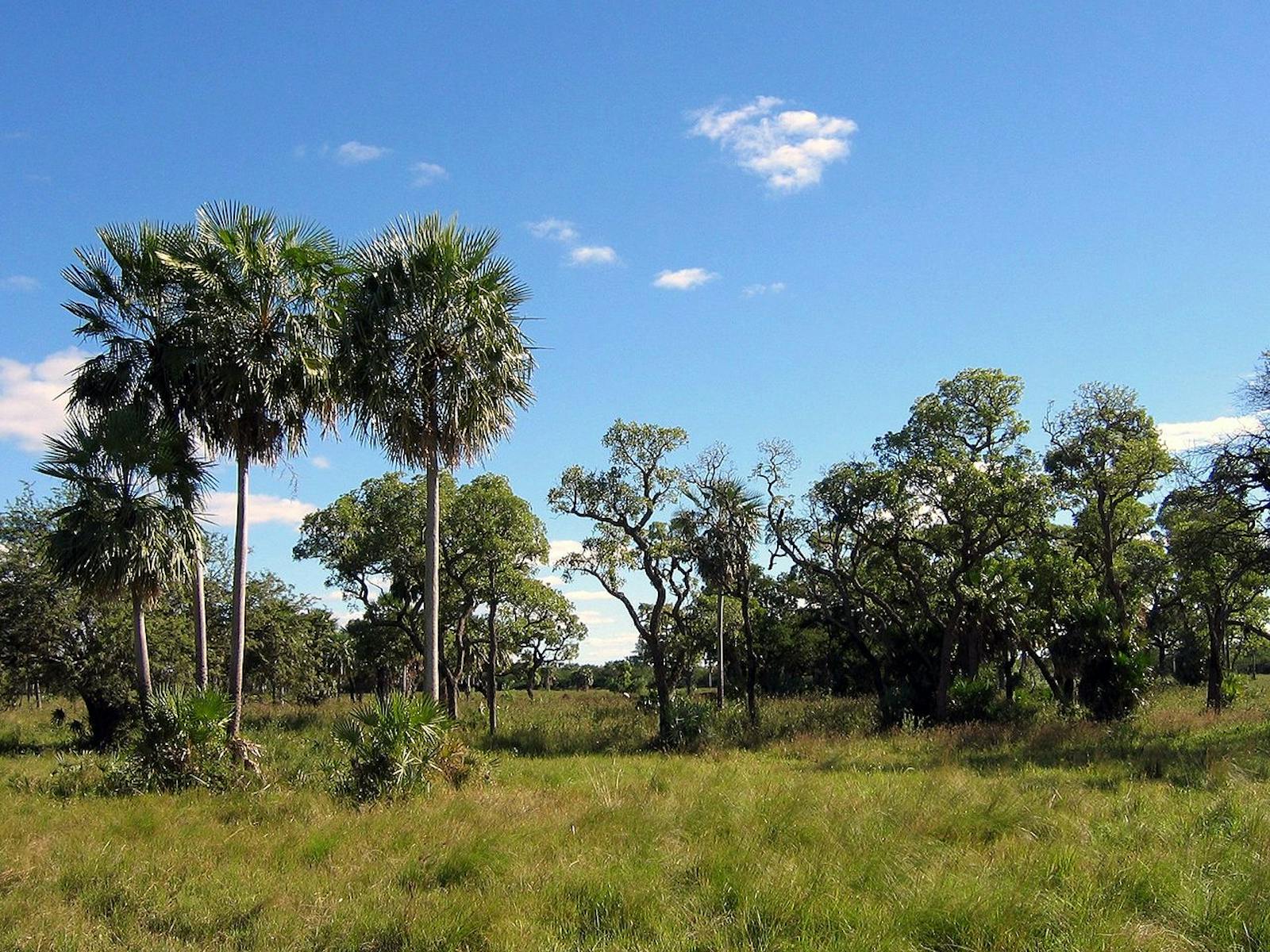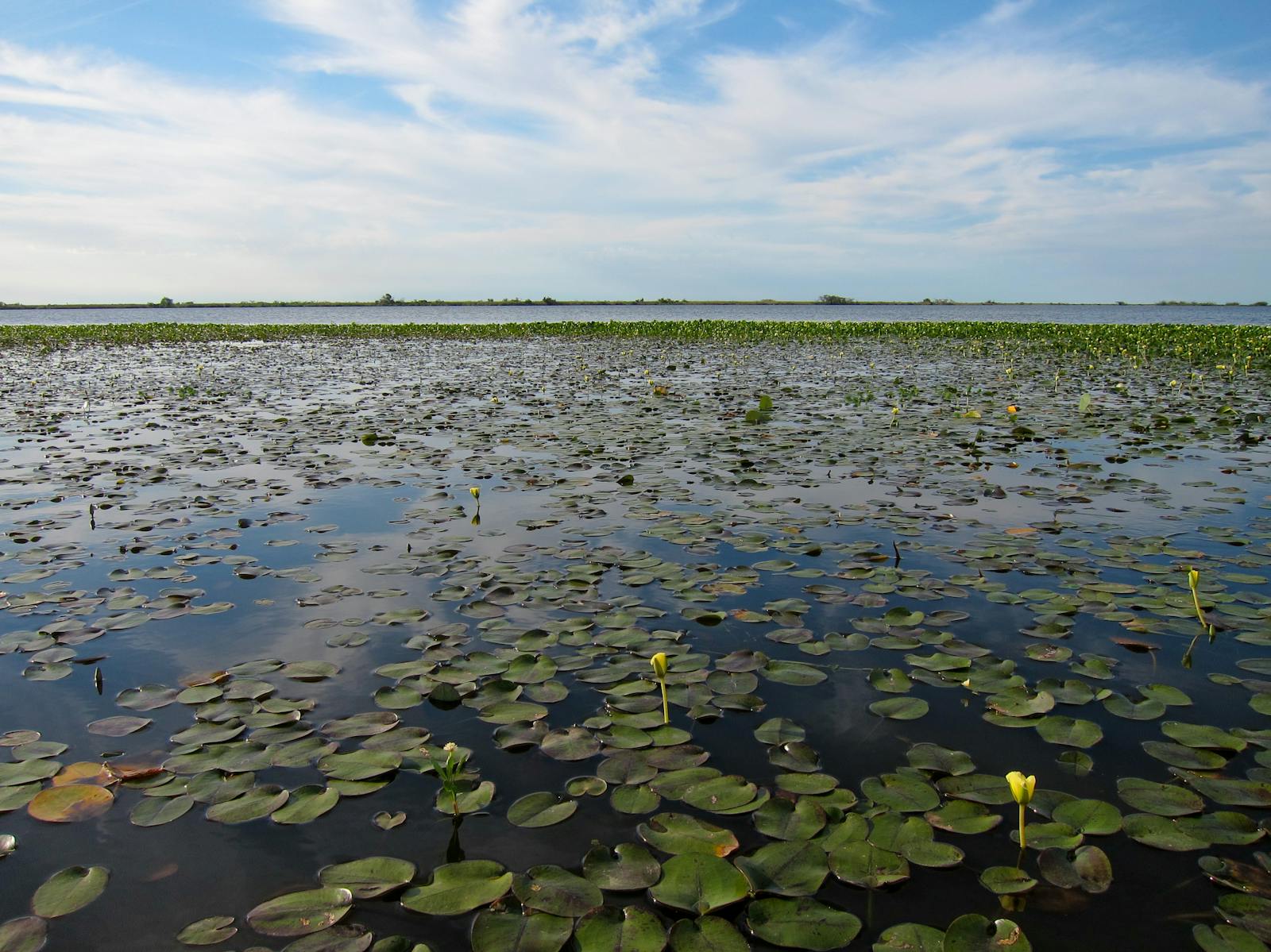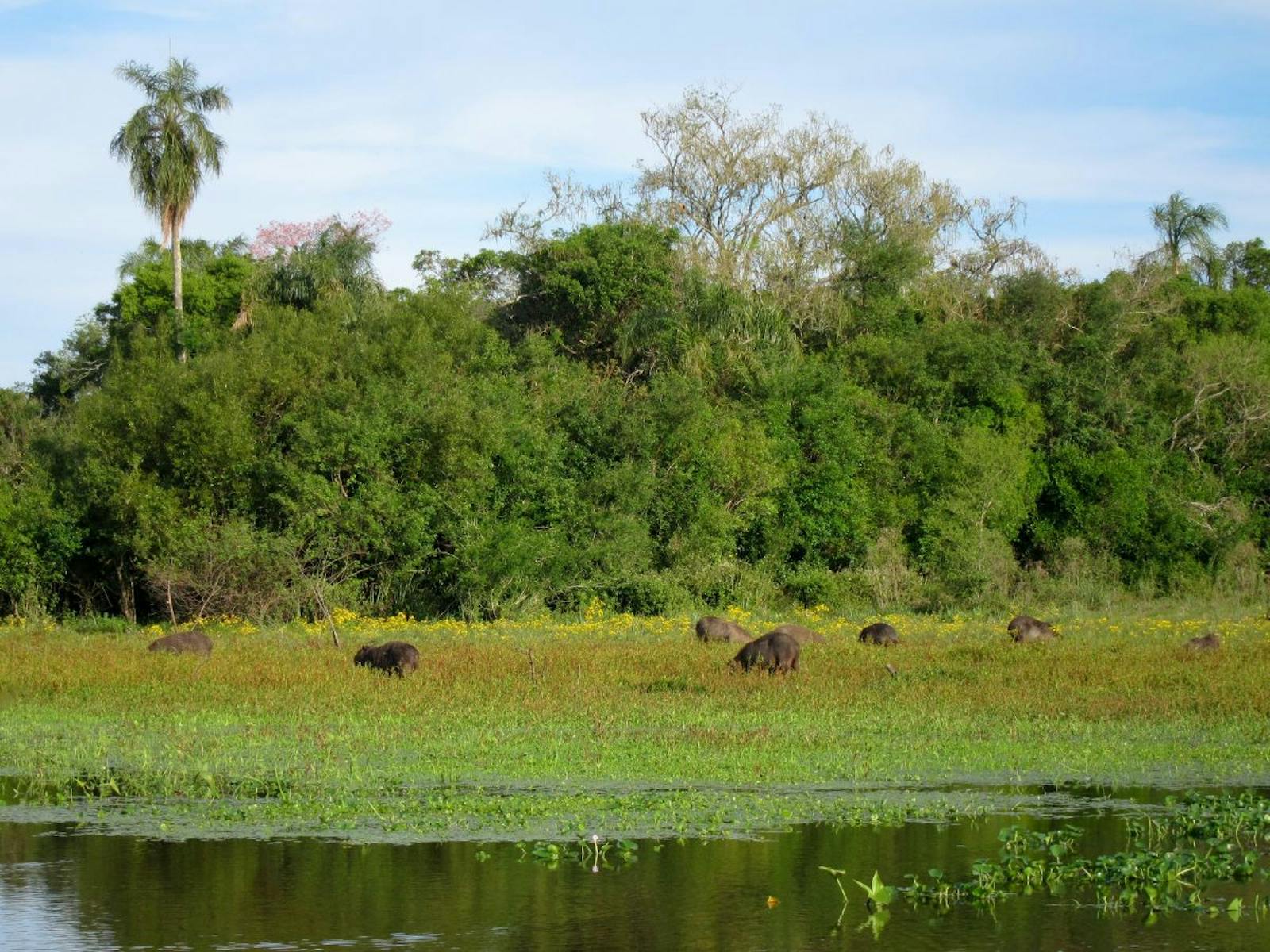Humid Chaco
The ecoregion’s land area is provided in units of 1,000 hectares. The protection goal is the Global Safety Net (GSN1) area for the given ecoregion. The protection level indicates the percentage of the GSN goal that is currently protected on a scale of 0-10. N/A means data is not available at this time.
Bioregion: Chaco Grasslands (NT4)
Realm: Southern America
Ecoregion Size (1000 ha):
29,278
Ecoregion ID:
571
Protection Goal:
37%
Protection Level:
2
States: Argentina, Paraguay, Brazil
The vulnerable giant anteater has a range stretching from Central to South America, including the Humid Chaco ecoregion, its seemingly preferred habitat type. The Humid Chaco is home to terrestrial termites which build numerous large earth mounds in the semi-open habitat, to which giant anteaters are particularly adapted given their front claws. These claws also come in handy for self-defence.
Its tongue has evolved sticky saliva and is highly capable at collecting insects. The giant anteater is unsurprisingly the largest species within its family. They are typically solitary, but females will carry offspring on their back for up to 10 months.

The flagship species of the Humid Chaco ecoregion is the giant anteater. Image credit: Creative Commons
The Humid Chaco ecoregion is located in northeastern Argentina, the center of Paraguay, and small areas in southwestern Brazil. The soils are generally sedimentary, originating from river flows and composed of fine materials. The average annual temperature drops from 23°C along the Paraguay border in the north to 18°C in Argentina in the south. Precipitation ranges annually from 750 mm in the west to 1,300 mm in the east.
This region is a mosaic of ecosystems including woodland and savanna. In this mosaic, various species of trees, shrubs, and coarse grass develop. The forests are mainly composed of the hardwood trees willow-leaf red quebracho and white quebracho. Other notable trees are the pink trumpet and silk floss.
Lower areas often flood, forming bogs containing the trees black carob, spiny hackberry, Jerusalem thorn, white carob, and the palm caranday. The grasslands of this region are quite varied: Elionurus muticus is dominant in forest, Sorghastrum agrostoides in flooded soils, and Panicum prionites in ravine and depression bottoms without permanent water.

Marsh deer. Image credit: Creative Commons
The diverse flora in this ecoregion naturally supports high faunal diversity. Mammals of note include the vulnerable white-lipped peccary, giant anteater, and marsh deer. Other large mammals include black howler monkey, Azara’s night monkey, maned wolf, collared peccary, capybara, pampas deer, cougar, and jaguar.
Restricted range birds that inhabit this ecoregion, among others, include the vulnerable chestnut seedeater and the endangered marsh seedeater. Other birds common to the area include savannah hawk, pale-crested woodpecker, undulated tinamou, and greater rhea. Reptiles dominant the aquatic environments, including spectacled caiman, broad-snouted caiman, black spine-neck swamp turtle, and yellow anaconda.
Historically, cattle ranching and forest exploitation have profoundly reduced the original vegetation of the ecoregion through grazing, logging, and burning for agriculture. Currently, there are numerous natural reserves with different degrees of protection and use: Parque Nacional Pilcomayo, Parque Nacional Chaco, Reserva Provincial Iberá, Reserva Provincial Granja Yatay, Reserva Provincial Pampa del Indio, Reserva Provincial Laguna La Loca, Reserva Provincial Vire-Pitá, Reserva Provincial del Medio- Los caballos, Reserva Provincial Cayastá, and provincial reserve Lote 7B Los Quebrachos, among others.
%20at%20Esteros%20del%20Ibera%CC%81%20Laguna%20Ibera%CC%81-Eco%20571-Argentina-CC-Miguel%20Vieira-2011.jpg)
Brazilian guinea pig. Image credit: Miguel Vieira, Creative Commons
Commercial exploitation of plant species has led to a decline in their abundance, and continued practice threatens to permanently change the vegetative structure of the ecoregion. The aforementioned willow-leaf red quebracho and white quebracho are both used for railroad ties, posts, charcoal, and medicine. Desertification in the ecoregion is likely to occur due to the clearing of trees combined with grazing of livestock. Commercial hunting and poaching are also threats. Illegal shipments of leather and furs violating quota caps and/or containing threatened species are found at ports.
The priority conservation actions for the next decade are to: 1) reduce exploitation of tree species (potentially by using ecosystem service payments to protect target tree species); 2) encourage natural resource inclusive farming methods; and 3) strengthen protected area patrols to reduce hunting/poaching.
Citations
1. Dellafiore, C. 2018. Southeastern South America, in Argentina, Paraguay, and Brazil. https://www.worldwildlife.org/ecoregions/nt0708. Accessed November 28, 2018.
2. Cabrera, A. L. 1976. Regiones fitogeográficas Argentinas. Enciclopedia Argentina de Agricultura y Jardinería, Second Edition, Vol. II, Buenos Aires, Argentina.
3. Dinerstein, E., D. M. Olson, D. L. Graham, A. L. Webster, S. A. Primm, M. P. Bookbinder, and G. Ledec. 1995. A conservation assessment of the terrestrial ecoregions of Latin America and the Caribbean. DC.: WWF and The World Bank.
4. Miranda, F., Bertassoni, A. & Abba, A.M. 2014. Myrmecophaga tridactyla. The IUCN Red List of Threatened Species 2014: e.T14224A47441961. http://dx.doi.org/10.2305/IUCN.UK.2014-1.RLTS.T14224A47441961.en. Accessed November 28, 2018.

%20at%20Esteros%20del%20Ibera%CC%81%20Laguna%20Ibera%CC%81-Eco%20571-Argentina-CC-Miguel%20Vieira-2011.jpg?auto=compress%2Cformat&w=1600)



